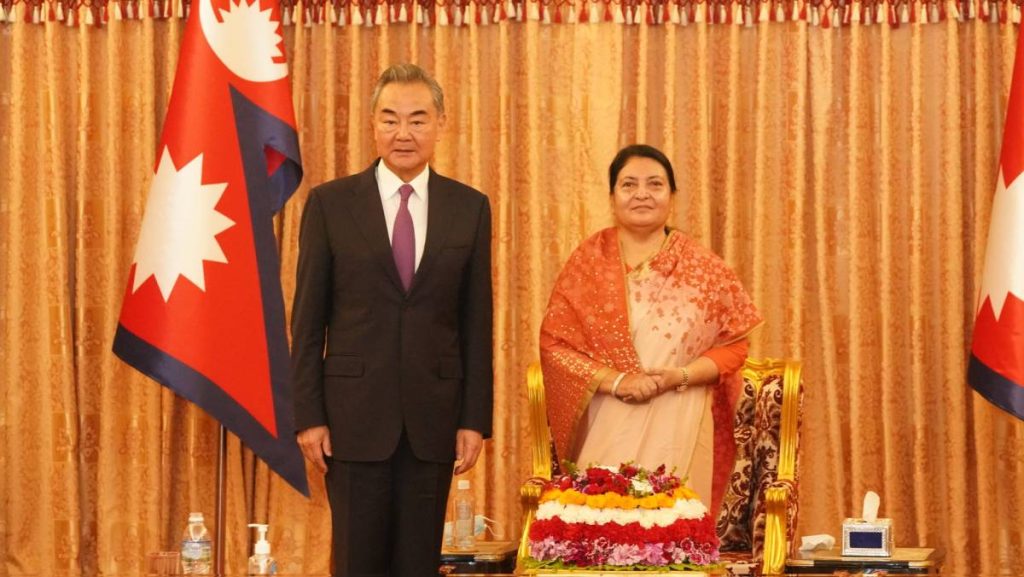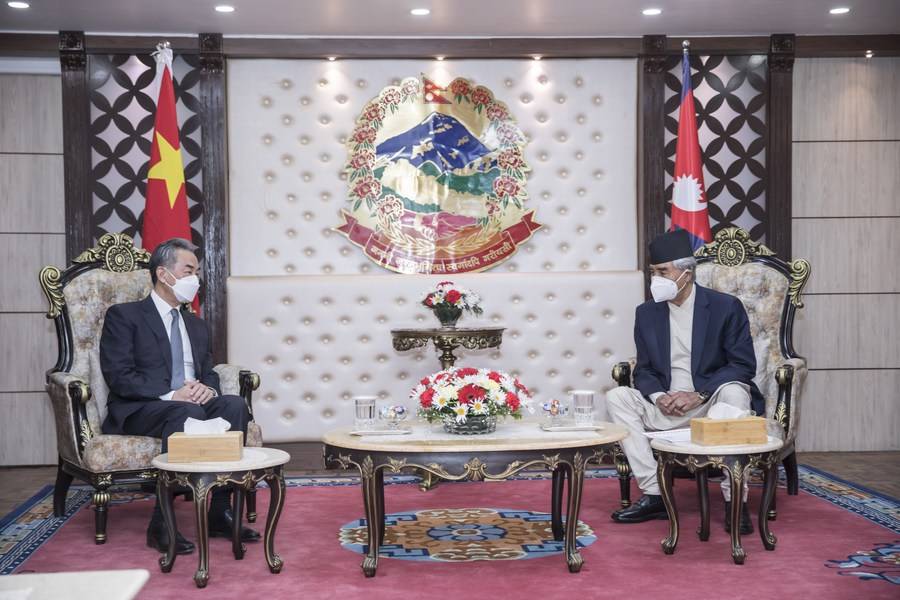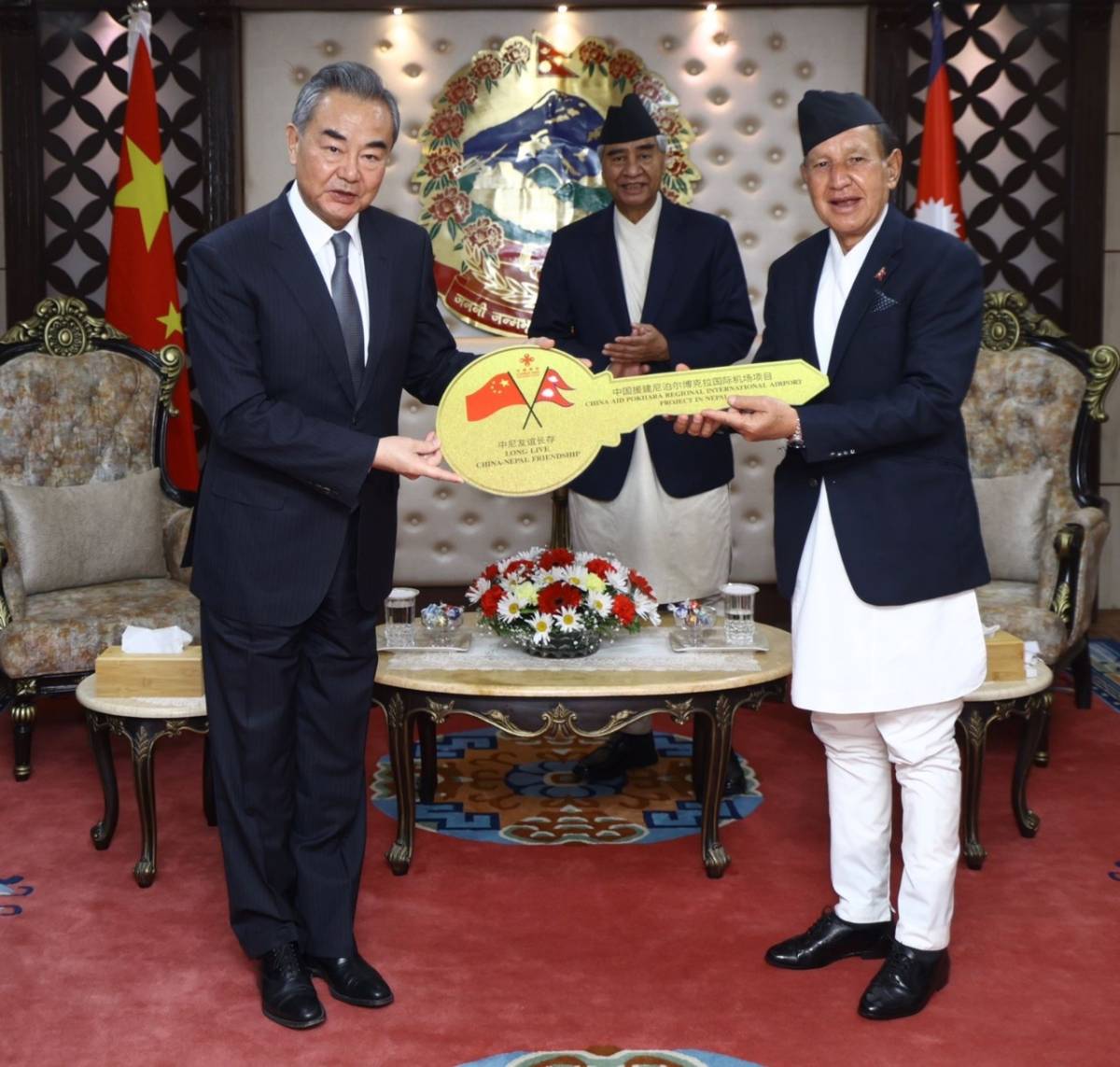The proposed China-Nepal Cross Border Railway project was one of the most difficult and risky railway construction projects in the world due to the complex geology such as high terrain, slope instability and the region being prone to high-intensity earthquakes…reports Asian Lite News
With aims to push rail connectivity to border areas, China is pursuing the Nepal-China Railway Project to fulfil its strategic interests.
While China had made rapid progress on rail connectivity within its borders, on the Nepalese side of the border, talk of a trans-Himalayan railway is only political tokenism, reported The HK Post.
The Chinese embassy in Kathmandu reportedly conveyed to the Nepalese officials that Beijing was prepared to sign an instrument to facilitate aid for the feasibility study of the proposed China-Nepal Cross Border Railway(CNR) project, connecting Keyrong in Tibet to Kathmandu.
Earlier, the technical study/pre-feasibility study of the proposed 121km railway from Keyrong to Kathmandu was conducted by the China Railway First Survey and Design Institute (CRFSDI) in 2018.

The CRFSDI study, which has not been made public, observed that the CNR project was one of the most difficult and risky railway construction projects in the world due to the complex geology such as high terrain, slope instability and the region being prone to high-intensity earthquakes.
The gradient from the Tibetan plateau to the low valleys in Nepal is too steep and the railway inside Nepal would pass through protected areas in Langtang, Rolwaling and Mt Everest regions.
The CRFSDI study estimated that it would take nine years and Yuan 30.15 billion (USD 4.7 billion) (equal to Nepal’s total revenue in 2018) to develop the Keyrong-Kathmandu rail track, reported The HK Post.
It also pointed out that the feasibility study to be carried out by studying the inner structure of the land of the CNR route may lead to different/higher estimates. About 98 per cent of the railway on the Nepalese side will consist of tunnels and bridges and the project will cost far more than the present estimation.
Similarly, another study, “Feasibility of China-Nepal Railway and Collaborative Construction of Belt and Road by Two Nations”, conducted by Chongyang Institute for Financial studies, Renmin University, pointed that a minimum 40 years would be required to recover the investment in the CNR project.
Further, during the visit (March 25-27) of Chinese Foreign Minister Wang Yi to Nepal, Nepalese Prime Minister Sher Bahadur Deuba reportedly indicated that his country was not interested in Chinese loans and requested for more grant assistance, reported The HK Post.
It appears that Nepal was aware that the Kathmandu-China rail connection would prove to be costly and difficult and Nepal in any case would be unable to bear the financial cost of building a difficult and expensive tunnel across the Himalayas.

Concerns over trade deal
Experts have raised concern over the implementation of the latest trade deal between Nepal and China as Beijing has been barring exports from Nepal for years for over two years citing COVID-19 restrictions.
China has agreed to provide duty-free treatment to goods of Nepali origin covering 98 per cent tariff lines, reported The Kathmandu Post.
The two countries exchanged letters on the preferential treatment besides signing other deals during the recent visit to Kathmandu by Chinese Foreign Minister Wang Yi.
Experts however questioned the workability of the pact saying, “For more than two years, China has been preventing Nepali products from entering the country on the pretext of COVID-19. Exports from Nepal to China have almost come down to zero,” Dinesh Shrestha, vice-president of the Federation of Nepalese Chambers of Commerce and Industry, told the Kathmandu Post.
According to the Nepal Trade Information Portal of the Ministry of Industry, Commerce and Supplies, China has been providing zero tariff treatment to about 8,000 goods originating in Nepal. These products account for 95 percent of Nepal’s exports to China.
“The question is about the implementation part. Why have Nepali exports to China fallen sharply?” said Shrestha. “And again, it is a matter of how serious the Chinese government will be in implementing the recent agreement.”

Nepal’s exports to China stood at a mere Rs 1 billion in the last fiscal year 2020-21 ended mid-July, while imports amounted to a staggering Rs 233.92 billion. The trade deficit with China amounted to Rs 232.90 billion in the last fiscal year, reported The Kathmandu Post.
Nepal’s main exports to China consist of incense sticks, handicraft (metal and wooden), noodles, pashmina, readymade garment, leather goods, rudraksha, tanned skin, tea, wheat flour and woollen carpet, among other products.
China is Nepal’s second largest trading partner, accounting for 14 per cent of its total trade. But Nepal suffers a huge deficit in its trade with its northern neighbour.
Moreover, the closure of the Chinese border since early 2020 has affected a large number of Nepali entrepreneurs exporting goods to China. China closed its border points due to the pandemic in January 2020, and they have not been fully operationalized since then, reported The Kathmandu Post. (ANI)

